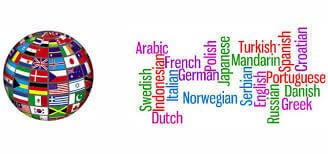
What Is Translation?
Translation is the process in which we develop new language scripts from existing scripts in a different language. The scripts usually have to follow a specific structure in line with translation rules and regulations to ensure that they are accurate and meaningful.
- A lot of translation service providers have been cropping up in recent years which proves that translation services are a very important part of our economy and these are services that people are looking for, big cooperate companies are outsourcing and so on and so forth. With the internet making the world a global village and there being food and political crisis around the world countries are now communicating with each other more and documents of all kinds from, legal to religious, to health are being translated to serve different purposes all over the world.
- What this high demand for translation services has done is that it has pushed translators to work among themselves to create easier ways and processes in which one can get their documents translated without necessarily them being translated by human beings. This has led to the development of software, translation machines, and automated translation memories.
- In a world where accurate communication is important regardless of the language barriers, these translations tools have been able to carve a niche for themselves to help companies and individuals in fast-paced environments with their translation needs. Researchers have predicted that this will continue to be the case and that the need for translation services will continue to grow in leaps and bounds as years go by. With that said, mechanized translations can never exist on their own now or in the days to come. Localization services will always be in high demand from humans besides translations as it gives a chance to cater the translated content to the current cultural norms in which it’s being presented. It is the only way to convey the message accurately across cultures.
15 Interesting Facts You Need to Know About Translation
Translation majorly involves working with languages and that being an integral part of the whole process we will look at different facts that you ought to know about translation. There are well over 6000 languages in the world today, and translation services help to break the language barriers.
- “Happy birthday” is the most common translated song followed by “It’s a small world”.
- We derive the word translation from a Latin word “translations” which means “transporting” or transferring something. Which is why translation is transferring the meaning of a certain word in a certain language to another language to mean the same thing in the other language? In Braille translation services, it implies transferring from one language to another.
- The Bible was the very first book translated; it is one book translated vastly in the entire world. It makes sense why it must be the only book that has over 1000 translations. We all know that if not translated into a whole new language, there are wordings and statements in the Bible interpreted and translated differently in different Bible versions. Also, the United Nations’ Universal Declaration of Human Rights translated into over 400 languages. And interestingly, Modern favorite Harry Potter translated into over 70 languages.
- Did you know that there is a “Translators day” set aside every year to celebrate translators? This is a very important profession that has lots of people getting into it every single day because of its influence in the world today and how its impact has made it easy for communication to happen while breaking down language barriers. It’s a profession highly appreciated and for that mere fact, each year on the 30th day of the month of September translators all over the world celebrate their profession while remembering their Patron saint, Saint Jerome.
- There are specific languages chosen for translation across the world, and there are those always targeted for translation. French, German, Spanish, and Japanese are the languages that have chosen for translation because of their impact in the world and how wide the population of the people who speak these languages is all over the world. The languages which have been the target for translation are English, French, German, Italian and Russian because more people speak these languages more than any other languages out there. This does n’t mean that they do not translate other languages to or from.
- It is important to note that there are translation services for the blind. This might not be as common in a lot of couture, but it is there, and it happens. We usually term it as the Braille form of translation for the blind and any visually impaired people. There is usually a Braille code for any foreign language one can imagine. This has made it possible for the visually impaired to learn their languages using Brailles and not have any difficulties. This applies to math, computers, science, and music. These all have their own unique Braille systems. Ever wondered where the name Braille usually comes from? Well, Braille was an intelligent handicap child who attended the Royal Institute for Blind Youth. Braille introduced a method of communication without light or sound and was keen to learn it. He spent his spare time trying to improve the new way of reading & writing and designed six dots in which combinations of dots and spaces represented letters, numbers, and punctuation marks. The Braille system allows blind people to read with their fingers using a system of raised dots. We base Braille on a basic unit of code known as a cell.
- Did you know that you can get an all-inclusive database on all the translation works ever done before?. Well UNESCO provides an online database that has all the translations you can think of from all over the world. We know it as ‘Index Translationum’ and it has a translation from Agatha Christie (7233 translations), Jules Verne (4751 translations) and William Shakespeare (4293 translations) who are the top 3 most translated authors according to recent translation statistics.
- According to recent studies, there are over 330,000 professional translators worldwide. You might wonder so many translators, Are they get work to do? The answer is yes, translation services are in very high demand and the number of translators all over the world is not enough.
- The English language is vast, and it has a lot of words over 250,000 words. It is usually very important for a translator to at least have a maximum number of words that he or she understands and works with the others as they come. We expect an English translator to understand the language perfectly, to avoid making mistakes. An average person understands 250 to 20,000 words. This is something anyone that plans on starting out with translation work should highly note.
- A professional translator can translate around 250 words within an hour. This is very important because this creates a particular level of speed which can tell how long one takes for a specific number of words in a full project. On average, a professional translator can translate 520,000 words per year when working full time.
- We consider language to be about 200,000 years old with the advancement in technology, translation has become more modern.
- There are languages easily translated from and into, and there are languages that are super hard to translate from and into. According to most professional translators, Spanish is the easiest language to translate, and Russian and Arabic are the hardest.
- In the 21st Century during the first decade between the years of 2000 and 2010, over 75% of translated books were in the French and German languages while only 5% of translated books were in the Chinese language.
- Arabic and English languages have the same punctuation but are different languages. We read the Arabic language from the right to left side while for English its vice verse.
- Approximately 1% of consumers usually prefer being on websites with their native language more than the English language. Therefore, having content with their native language would come in handy for them.
Those are but some few translation facts that you should note if you would love to get into that profession. When starting out just like any other profession is hard, but as you get the feel, it is a little easier and lucrative. It’s good to note that not all translation services take into consideration some rules and regulations of the translation work and this why one must be very thorough when looking for one.







